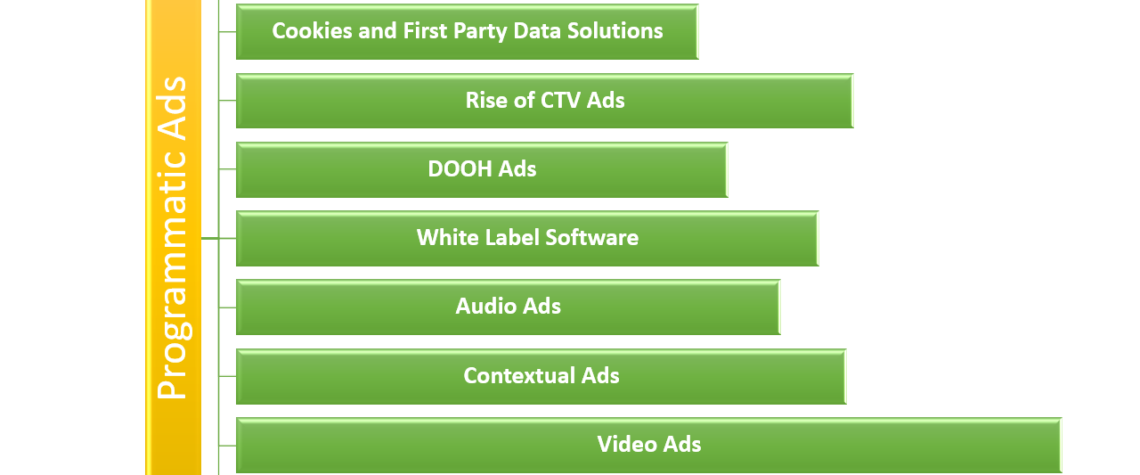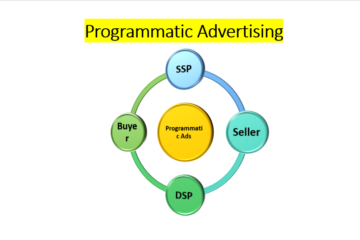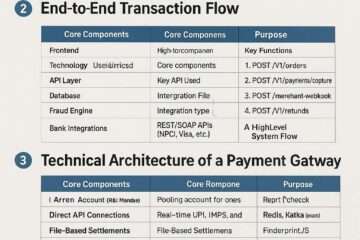

With the decline of third-party cookies, there are important questions being raised about the future of programmatic advertising, a field that has experienced significant growth in the past two decades.
Programmatic advertising must adapt to changes, but it will continue to be a crucial tool in the world of digital marketing.
The projected programmatic display ad spend in the US is expected to reach $148.8 billion in 2023, showing a 16.5% increase compared to the previous year. Furthermore, it is anticipated to experience a further 13% growth, reaching $168 billion in 2024.
Following a significant surge of 41% in programmatic ad spend in the US in 2021, the pace of growth has now decelerated due to prevailing economic uncertainty. Given the ongoing predictions of a potential recession in late 2023 or early 2024, it seems likely that the current slowdown will persist.
Considering the various opportunities and challenges, it is worth examining the programmatic advertising trends that are expected to gain momentum in the upcoming year.
Key Statistics on Programmatic Advertising
- A significant majority of marketers continue to depend on third-party cookies.
- A significant majority of businesses that utilize customer data platforms (CDPs) have reported positive outcomes in terms of revenues and customer loyalty.
- In 2023, there was a significant 25% increase in CTV ad spend in the US compared to the previous year.
- In 2023, a significant majority of ad buyers, specifically 61%, expressed their intention to invest in retail media networks (RMN).
- In 2023, programmatic advertising is projected to make up a whopping 91% of the overall digital display ad spend.
- According to projections, there is expected to be a significant increase of 57% in global digital out-of-home (DOOH) ad spend between 2023 and 2028.
- It is projected that a significant majority of businesses, around 91%, will incorporate video as a key marketing tool by the year 2023.
Latest trends in programmatic advertising.
Amidst the post-pandemic landscape, one of the key concerns in the programmatic advertising industry revolves around the increasing prominence of privacy-first initiatives. These initiatives are designed to empower users with more control over their data, which is crucial for the success of marketing campaigns.
However, there is a projected increase in global digital ad spend from $549.51 billion in 2022 to over $601 billion by the end of 2023. The Asia-Pacific region is leading the way in terms of growth, while North America and Western Europe are facing challenges due to high inflation and a slowdown.
Here are a few programmatic advertising trends that have surfaced in recent years and are expected to influence digital ad spend in the future:
Managing In-House Programmatic Campaigns
A decade ago, programmatic ad buying was only adopted by a handful of businesses. The current situation is quite intricate.
According to recent data, a significant majority (68%) of marketing agencies have embraced the in-house model for programmatic campaigns in 2021. There was a slight decrease in the number of agencies in 2020, but it has since rebounded.
The switch may have been driven by companies’ desire for greater transparency within the programmatic process, resulting in strengthened marketing strategies. There are several benefits to consider when it comes to in-house programmatic advertising, such as cost savings and resource efficiency.
In the near future, companies may be inclined to adopt a more hybrid approach due to rising performance costs and complexity caused by recent developments like the impending end of cookies.
Exploring the Future of Cookies and First-Party Data Solutions
Marketing without relying on third-party data is becoming increasingly important, which means that the programmatic advertising process will have to find alternative solutions.
With the rise of privacy legislation in recent years, like Europe’s General Data Protection Regulation (GDPR) and the California Privacy Act, the use of tracking cookies to personalize ads according to online user behavior has become increasingly difficult.
In the ever-changing landscape of legislation, traditional methods of monitoring user behavior are being dismantled. However, advertisers can still gather valuable user data, as long as they have the user’s consent.
Both Apple and Firefox have recently announced the discontinuation of third-party cookie support, and Google is set to do the same by the end of 2024.
Google has already begun developing identity solutions, with their most recent launch being the Topics API in January 2022. Topics is a tool that helps users discover their top interests for the week by analyzing their browsing activity on the Chrome browser. Interests are utilized to group users into anonymous clusters for advertising purposes.
The API originated from Google’s discontinued Federated Learning of Cohorts (FLoC) initiative.
Shared user IDs have also been seen as another effective solution to the decline of cookies. An attempt was made by the Interactive Advertising Bureau’s (IAB) DigiTrust service to lead the way in this area, but unfortunately, it was not able to sustain itself financially.
In response to Google’s decision to phase out cookies, Trade Desk has developed the Unified ID 2.0 (UID2) open-source framework. Users are required to provide consent for UID2 by providing an email address.
As the data landscape evolves, the value of first-party data becomes increasingly apparent to publishers and advertisers. While the quantity of available data may decrease, the overall quality of the data is expected to improve over time.
The rise of Connected TV (CTV)
The projected growth for US connected TV (CTV) programmatic display ad spend is expected to reach $25.09 billion in 2023, up from an estimated $20.7 billion in 2022.
During the pandemic, there was a noticeable increase in ad spending on over-the-top (OTT) and CTV platforms. This shift can be attributed to the rise in streaming services like Netflix and YouTube, as more people turned to these platforms during lockdowns. In 2020, there was a significant increase of 41% in streaming revenues in the US.
In the post-pandemic years, the OTT market faced significant challenges due to a decline in subscriber growth, market saturation, and rising costs. In the upcoming years, there may be a shift towards prioritizing ROI and profitability rather than solely focusing on acquiring new subscribers.
In order to achieve this, it is necessary to move away from the conventional subscription-only, ad-free models. By 2023, all the major streaming services such as Netflix, Disney+, and Hulu have introduced subscription tiers that include advertisements.
The CTV segment is poised to become one of the most captivating programmatic advertising trends to keep an eye on in 2023. Attention must be given by those in the advertising industry to the reevaluation of the procurement process, methods, and measurements.
Programmatic display advertising in the CTV space is still in its early stages, but those who are proactive and adapt to the changing landscape will benefit greatly.
Exploring the Progress of Digital Out-of-Home (DOOH) Ads
In light of recent challenges faced by the industry, particularly due to the impact of the pandemic and resulting lockdown measures, marketing experts are now seeking creative approaches to reach out to customers who are once again on the move. One such method that has gained renewed popularity is DOOH (Digital Out-of-Home) advertising.
According to projections, the US is anticipated to see a substantial increase in DOOH ad spend, reaching a staggering $4.87 billion by 2023. Given the increasing prevalence of digital ad screens nationwide, it seems that the programmatic strategy is poised to capture a greater portion of advertising expenditure in the coming years.
Programmatic advertising offers a range of advantages:
Extensive outreach
Ad blockers have no effect
Subtle product integrations
This segment is well-positioned to thrive in a cookie-free future due to its diverse range of audience targeting methods and the opportunity it presents for contextual marketing to become the main focus.
Using programmatic DOOH, brands have the ability to create unforgettable and attention-grabbing experiences that will have a long-lasting effect on customers.
In 2023, the CTV segment is set to become one of the most fascinating programmatic advertising trends to keep an eye on. Attention must be given to the procurement process, methods, and measurements in the advertising industry that require reevaluation.
Programmatic display advertising on CTV is still in its early stages, but those who adapt now to stay ahead of the game will see the benefits.
The surge in popularity of White Label Software
A white-label software is a versatile software solution designed and offered to businesses as a service. Businesses have the option to purchase access to a white-label advertising platform, which grants them full control over their ad campaigns at an administrator level.
By enhancing control over campaigns and offering transparency in the ad-buying process, brands can greatly benefit. It’s interesting to note that many companies still prefer to handle their active marketing campaigns in-house.
For many companies looking for more programmatic control, the white label software as a service (SaaS) model is often a more cost-effective option than creating custom platforms.
Programmatic Audio Ads
Programmatic audio is a fascinating concept that is revolutionizing the way we consume audio content. It allows advertisers to reach their target audience in a more precise and efficient manner. With programmatic audio, advertisers can deliver personalized messages to listeners based on their interests and demographics. This technology opens up a Programmatic audio advertising operates similarly to programmatic display advertising, streamlining the process of selling ads in audio content like podcasts.
Advertisers have the opportunity to purchase targeted ad inventory directly from audio publishers through a convenient and streamlined system. This opens up the opportunity to reach out to audiences using various devices, such as:
We offer a wide range of electronic devices, including desktops, laptops, smartphones, and tablets.
Smart speakers are becoming increasingly popular in households around the world. These innovative devices have the ability to play music, answer questions, control smart home devices, and much more. With their sleek designs and advanced technology, smart speakers are revolutionizing the way we interact with our homes. Whether you’re Audio ads have a unique advantage over TV and display ads as they do not require visual engagement. Digital audio has a unique ability to connect with consumers in a way that visual advertising cannot.
Listening to podcasts can create a sense of familiarity, as if you’re having a conversation with a close companion. The popularity of podcasts in the United States has been steadily increasing in recent years, with a significant 62% of Americans having tuned in to a podcast at least once.
Although the percentage of monthly listeners (42%) and weekly audiences (31%) is lower, these figures still surpass the pre-pandemic years.
In addition, a significant majority of podcast listeners tend to listen to a large portion, if not the entire episode, which presents a valuable opportunity for programmatic audio advertising.
Another great aspect is that the majority of audio commercials cannot be skipped. Given the absence of an ad blocker for audio advertising, ads will gain increased exposure.
Contextual Ads
Contextual targeting is a simple and effective method of advertising. However, keeping an eye on programmatic advertising trends is crucial, especially considering the decline of third-party cookies.
Contextual targeting in digital advertising is becoming increasingly important as ads are now placed based on the context of the website rather than relying solely on a user’s online behavioral data.
It is quite safe to assume that individuals who come across these advertisements will be particularly intrigued by them due to the relevance of the webpage.
Users are increasingly fatigued by the sight of irrelevant ad creatives appearing in inappropriate locations, resulting in the phenomenon known as banner blindness. Therefore, advertisers should enhance the ad experience by incorporating more relevant and personalized advertisements in the suitable context.
Video Advertisements
Video ad spend keeps increasing annually and with good justification. In 2023, video consumption made up a whopping 65% of all internet traffic. Netflix single-handedly represents 15% of the global internet traffic.
By the end of 2023, programmatic video ad spending in the US is projected to reach nearly $74 billion, showing a significant increase from the $52 billion spent in 2021.
Video continues to be the preferred media type for impactful display ads.
In 2021, programmatic video advertising spend surpassed the non-video segments in the US, and it is projected to maintain a majority share in 2023. It’s clear that automated video ad buying has become the norm for distributing digital video commercials.
Mobile Gaming Segment
Mobile gaming has become increasingly popular in recent years. With the rise of smartphones and tablets, people can now enjoy their favorite games on the go. The convenience and portability of mobile gaming have made it a favorite pastime for many. Whether it’s a quick puzzle game or an immersive role
According to projections, the global mobile gaming community is expected to grow significantly in the coming years. The number of mobile game players is estimated to increase from approximately 1.8 billion in 2021 to over 2.7 billion by 2027. The increase in demand is fueled by the emergence of 5G networks, which offer accelerated data transfers and enhanced connectivity.
Until recently, there was a prevailing notion that mobile gaming audiences were either too limited or too specialized for major companies to take notice. The perspective has changed.
The revenue generated by mobile gaming is projected to increase significantly, reaching $222.7 billion by 2027 from an estimated $124.9 billion in 2022. Meanwhile, it is estimated that the average revenue per user (ARPU) in the mobile gaming industry will reach $90.16 by 2023.
The mobile gaming landscape has become a prime target for advertisers looking to allocate their digital ad spend.
Ads can be seamlessly incorporated into the game experience, either by rewarding users with tokens or coins for watching commercials, or by displaying them at the bottom of the game screen, similar to traditional banner ads.
Given the current landscape, it is crucial for brands that have yet to venture into this realm to start contemplating the idea of entering and identifying gaming ad networks that align with their requirements.
Summary
Programmatic advertising is a valuable tool for marketers to enhance the effectiveness of their campaigns by precisely targeting specific channels. Utilizing automated systems, analysts can effectively target desirable markets and demographics, leveraging new data to uncover untapped opportunities.
If you haven’t tapped into the power of programmatic ads, you’re overlooking a golden chance to cut costs and enhance the effectiveness of your online ad campaigns.
Marketers are set to shift their attention towards programmatic trends and seize new opportunities that have emerged due to the pandemic. These include the growing popularity of connected TV, DOOH, and audio advertising, which are all integral components of a successful marketing mix.
It is important for publishers to anticipate advertisers’ efforts to find innovative ways to connect with a changing audience.




























































